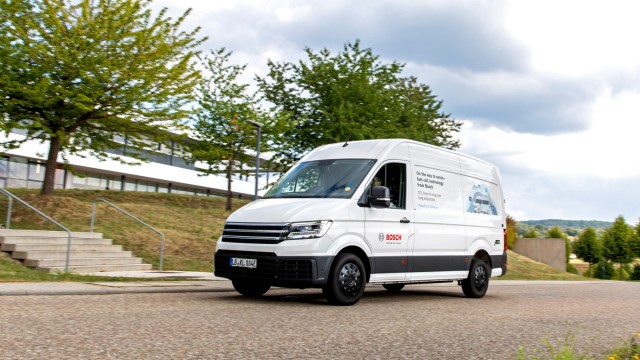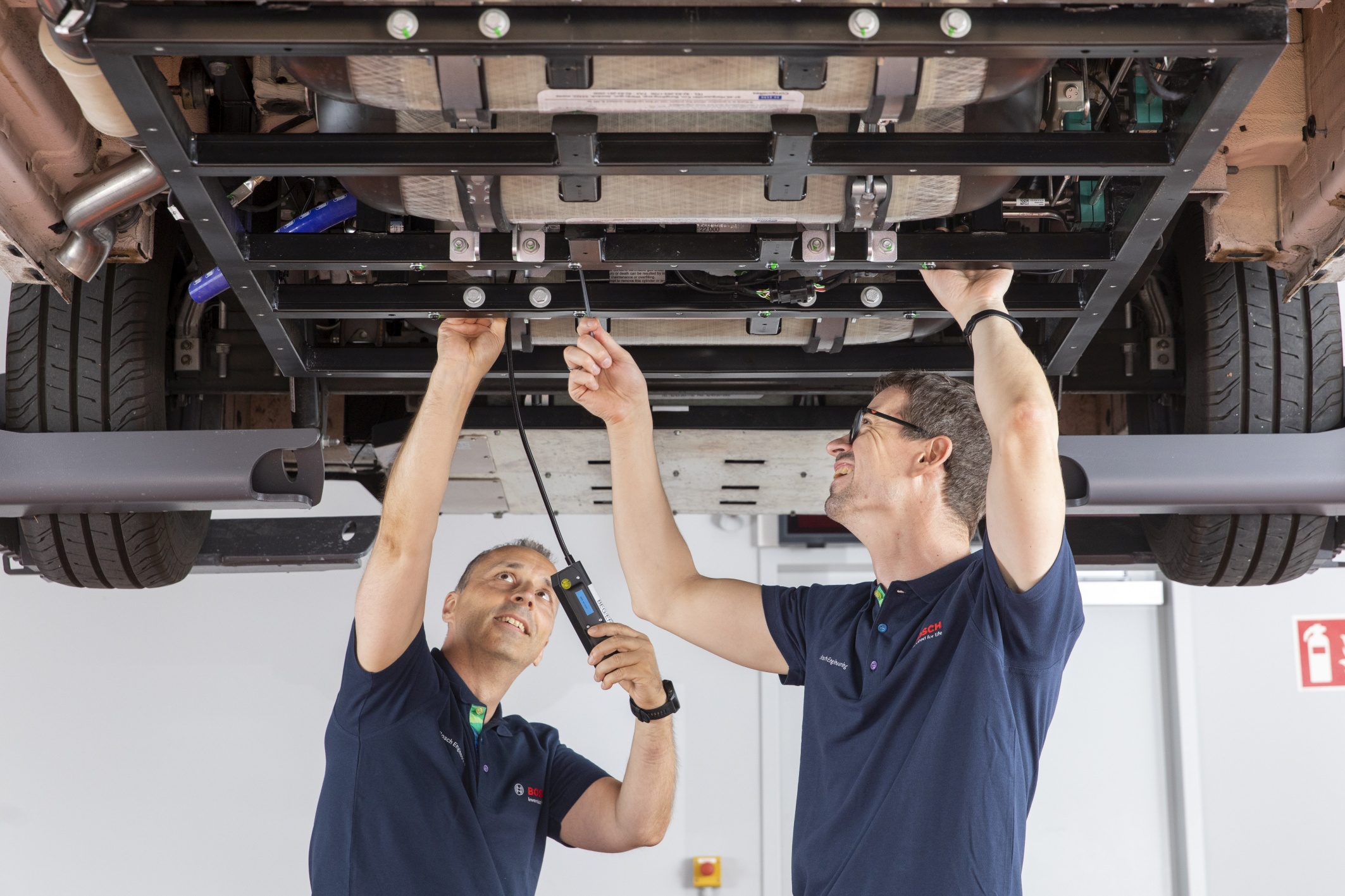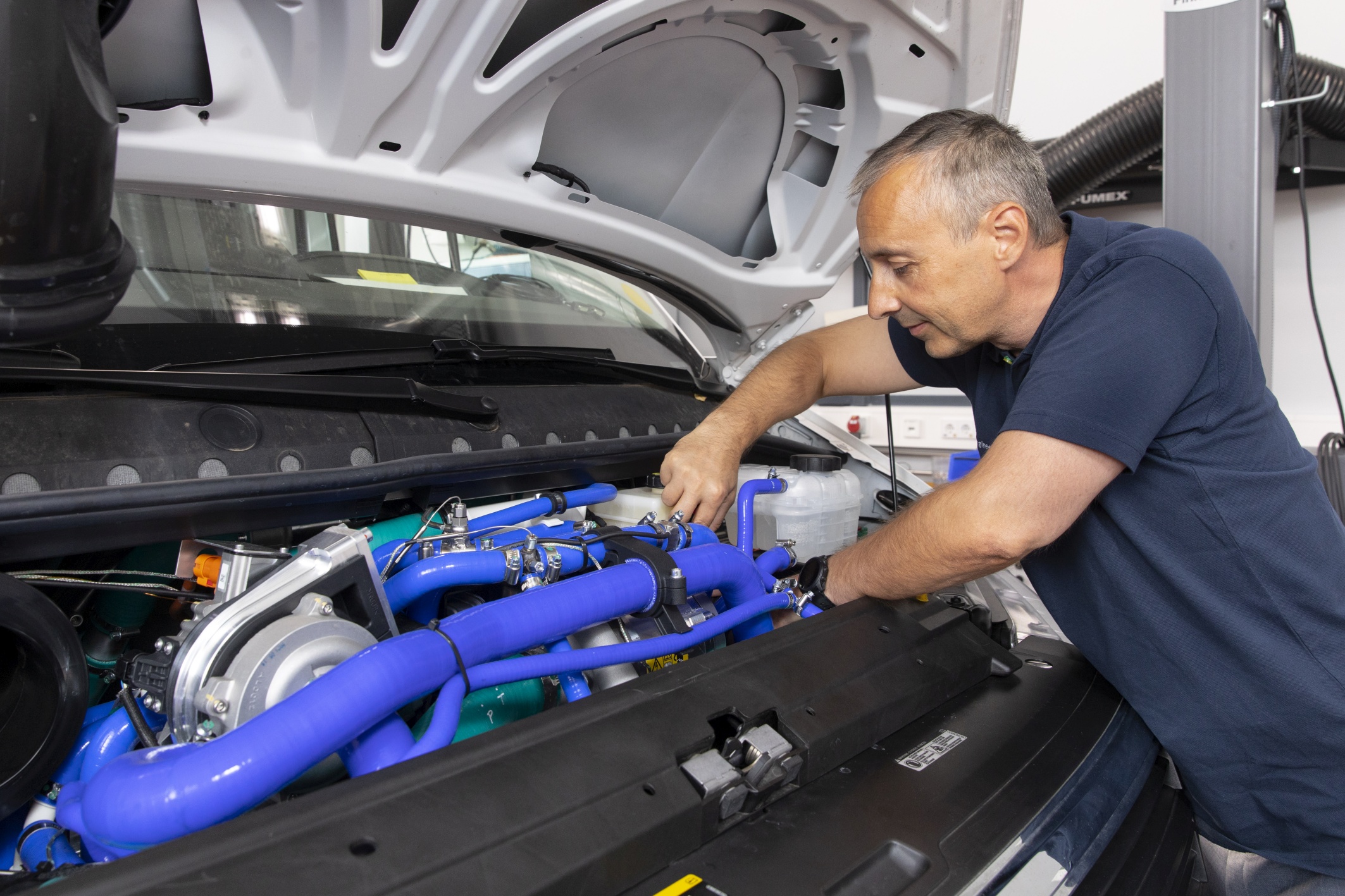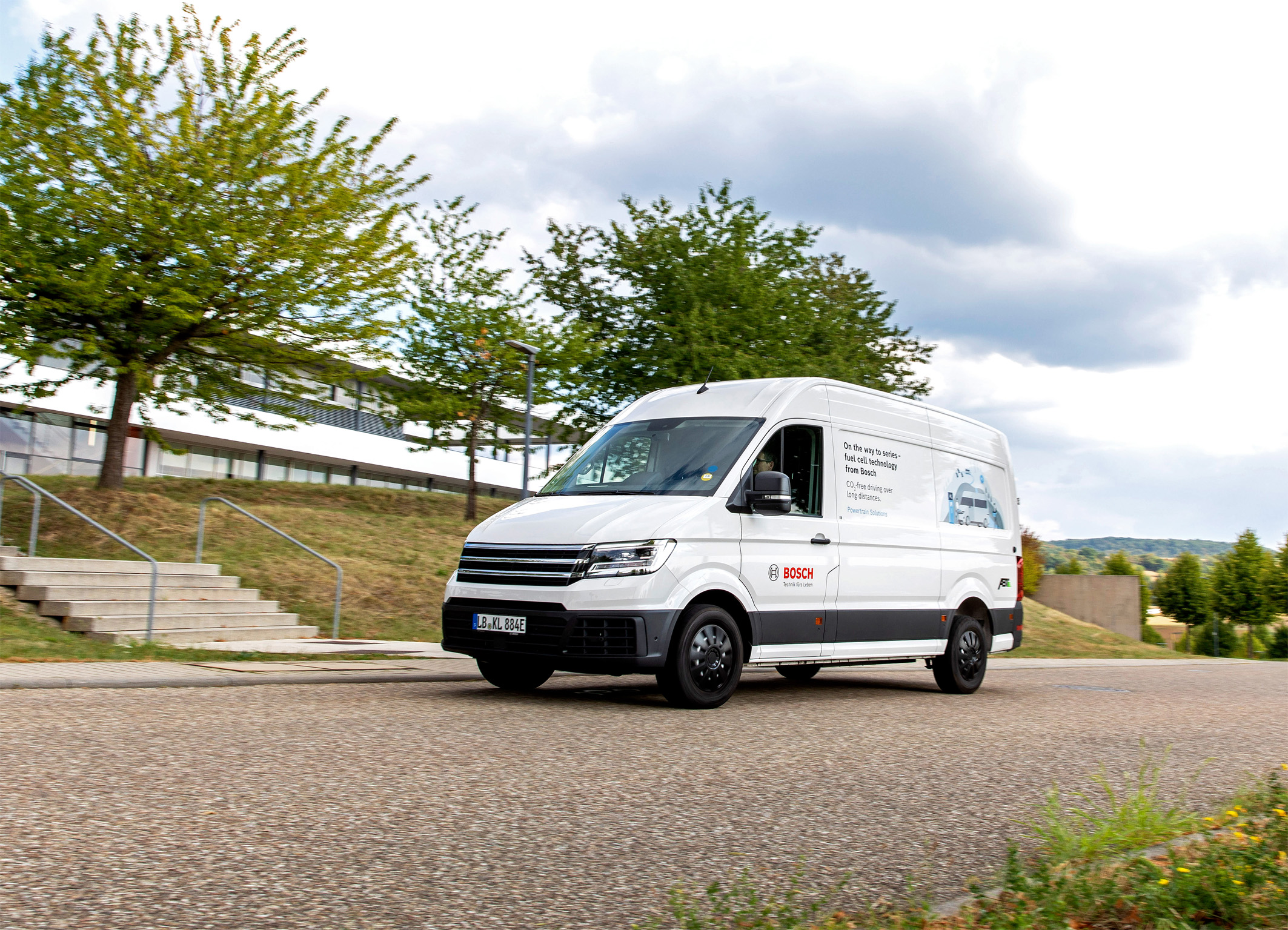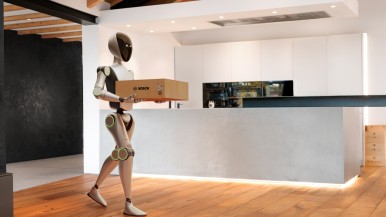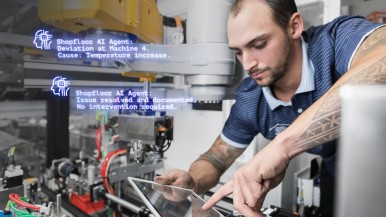Stuttgart – Vans get goods to their destination quickly, ideally using a powertrain with zero local emissions. But the longer the journey and heavier the vehicle, the more a battery-based electric drive reaches its limits. And that is where the strengths of the fuel cell come into play. Bosch has now equipped two vans with this technology and started test operation on the road. “The fuel cell enables long ranges and short refueling times, which makes long journeys more economical,” says Dr. Markus Heyn, member of the Bosch board of management and chairman of the Mobility Solutions business sector. “With the two fuel cell vans, we are expanding our understanding of the system and showing that the fuel cell can also be a suitable drive solution for light commercial vehicles.” The partner in the project is ABT eLine GmbH, which designed and converted the vehicles together with Bosch Engineering GmbH. At IAA Transportation in Hanover, Bosch is offering interested visitors the opportunity to experience the test vehicles and Bosch fuel cell technology in action on a track.
BOSCH PRESS CONFERENCE: Monday, September 19, 2022, from 11:10 to 11:30 CEST: with Dr. Markus Heyn, member of the Bosch board of management and chairman of the Mobility Solutions business sector, at the Bosch booth B22 in hall 20 and via livestream on the Bosch Media Service.
Panels with Bosch experts at the IAA Conference:
- Tuesday, September 20, 14:15 – 15:15 CEST in the Industry Forum: Presentation: “How to manage the operational challenges of multi-brand commercial EV fleets” by Michael Köhler, Senior Vice President Business Unit Battery, at Robert Bosch GmbH
- Tuesday, September 20, 17:30 – 17:45 CEST on the Main Stage: Keynote: “Powertrain solutions for future transportation” by Jürgen Häusser, Vice President Product Management Commercial Vehicle & Off-Road at Robert Bosch GmbH
- Wednesday, September 21, 17:00 – 19:00 CEST at the Cummins booth (hall 20, booth A12):
“Open dialog on the hydrogen engine” with Dr. Andreas Kufferath, Engineering System Diesel Powertrain at Robert Bosch GmbH - Thursday, September 22, 11:30 – 12:00 CEST on the Main Stage: Presentation: “Global digitization in logistics” by Mariella Minutolo, Executive VP Progressive Mobility Players at Robert Bosch GmbH
Presskit: Bosch at the IAA 2022
Event: Bosch press conference at the IAA Transportation 2022
FOLLOW the Bosch IAA 2022 highlights at www.bosch-iaa.com and on Twitter: @BoschPress, #BoschIAA
About Bosch
The Bosch Group is a leading global supplier of technology and services. It employs roughly 418,000 associates worldwide (as of December 31, 2024). The company generated sales of 90.3 billion euros in 2024. Its operations are divided into four business sectors: Mobility, Industrial Technology, Consumer Goods, and Energy and Building Technology. With its business activities, the company aims to use technology to help shape universal trends such as automation, electrification, digitalization, connectivity, and an orientation to sustainability. In this context, Bosch’s broad diversification across regions and industries strengthens its innovativeness and robustness. Bosch uses its proven expertise in sensor technology, software, and services to offer customers cross-domain solutions from a single source. It also applies its expertise in connectivity and artificial intelligence in order to develop and manufacture user-friendly, sustainable products. With technology that is “Invented for life,” Bosch wants to help improve quality of life and conserve natural resources. The Bosch Group comprises Robert Bosch GmbH and its roughly 490 subsidiary and regional companies in over 60 countries. Including sales and service partners, Bosch’s global manufacturing, engineering, and sales network covers nearly every country in the world. Bosch’s innovative strength is key to the company’s further development. At 136 locations across the globe, Bosch employs some 87,000 associates in research and development.
The company was set up in Stuttgart in 1886 by Robert Bosch (1861–1942) as “Workshop for Precision Mechanics and Electrical Engineering.” The special ownership structure of Robert Bosch GmbH guarantees the entrepreneurial freedom of the Bosch Group, making it possible for the company to plan over the long term and to undertake significant upfront investments in the safeguarding of its future. Ninety-four percent of the share capital of Robert Bosch GmbH is held by Robert Bosch Stiftung GmbH, a limited liability company with a charitable purpose. The remaining shares are held by Robert Bosch GmbH and by a company owned by the Bosch family. The majority of voting rights are held by Robert Bosch Industrietreuhand KG. It is entrusted with the task of safeguarding the company’s long-term existence and in particular its financial independence – in line with the mission handed down in the will of the company’s founder, Robert Bosch.
Additional information is available online at www.bosch.com, www.bosch-press.com.
